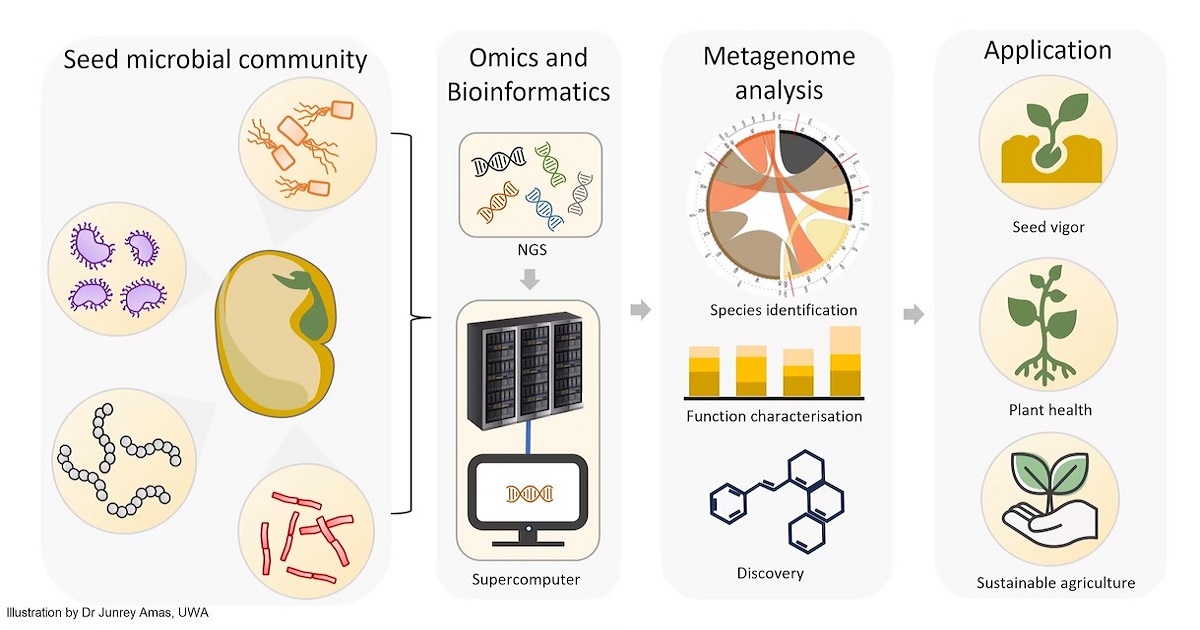- Tracked forImpact Factor
- 2.8CiteScore
- 31 daysTime to First Decision
Progress in Multi-omics and Bioinformatics Approaches: Seed Microbiome and Metagenome
Special Issue Information
Dear Colleagues,
This Special Issue explores the dynamic field of seed microbiome research, leveraging advanced multi-omics and bioinformatics methodologies. Historically, understanding the microbial communities associated with seeds has been pivotal in agriculture, influencing seed health, plant growth, and overall crop productivity. Traditional culture-based techniques have given way to high-throughput sequencing and bioinformatics tools, allowing for comprehensive analyses of the microbial diversity, community structure, and functional interactions of seeds.
The aim of this Special Issue is to showcase recent advancements in multi-omics (genomics, metagenomics, transcriptomics, proteomics, metabolomics) and bioinformatics approaches when applied to seed microbiomes. We aim to collate cutting-edge research that highlights innovative methodologies, novel findings on seeds’ microbial composition and function, insights into plant–microbe interactions, and advancements in understanding microbial contributions to seed health and crop performance.
We are inviting original research articles, reviews, reports, communications, and perspectives that address key aspects of seed microbiome and metagenome research. Topics of interest include but are not limited to microbial diversity across different seed types, the functional roles of seed-associated microbes, environmental influences on seed microbiomes, technological innovations in multi-omics analyses, and implications for sustainable agriculture and food security.
Overall, this Special Issue aims to foster interdisciplinary discussions, provide a platform for sharing state-of-the-art research, and drive future directions in leveraging seed microbiomes for agricultural improvement and environmental sustainability.
Dr. Aria Dolatabadian
Dr. Mohammad Sayari
Guest Editors
Manuscript Submission Information
Manuscripts should be submitted online at www.mdpi.com by registering and logging in to this website. Once you are registered, click here to go to the submission form. Manuscripts can be submitted until the deadline. All submissions that pass pre-check are peer-reviewed. Accepted papers will be published continuously in the journal (as soon as accepted) and will be listed together on the special issue website. Research articles, review articles as well as short communications are invited. For planned papers, a title and short abstract (about 250 words) can be sent to the Editorial Office for assessment.
Submitted manuscripts should not have been published previously, nor be under consideration for publication elsewhere (except conference proceedings papers). All manuscripts are thoroughly refereed through a single-blind peer-review process. A guide for authors and other relevant information for submission of manuscripts is available on the Instructions for Authors page. Seeds is an international peer-reviewed open access semimonthly journal published by MDPI.
Please visit the Instructions for Authors page before submitting a manuscript. The Article Processing Charge (APC) for publication in this open access journal is 1200 CHF (Swiss Francs). Submitted papers should be well formatted and use good English. Authors may use MDPI's English editing service prior to publication or during author revisions.
Keywords
- multi-omics
- bioinformatics
- seed microbiome
- metagenomics
- microbial ecology
- functional diversity
- plant–microbe interactions
- community analysis
- microbiota composition
- environmental adaptation

Benefits of Publishing in a Special Issue
- Ease of navigation: Grouping papers by topic helps scholars navigate broad scope journals more efficiently.
- Greater discoverability: Special Issues support the reach and impact of scientific research. Articles in Special Issues are more discoverable and cited more frequently.
- Expansion of research network: Special Issues facilitate connections among authors, fostering scientific collaborations.
- External promotion: Articles in Special Issues are often promoted through the journal's social media, increasing their visibility.
- e-Book format: Special Issues with more than 10 articles can be published as dedicated e-books, ensuring wide and rapid dissemination.

